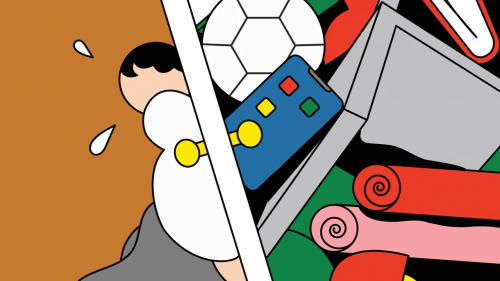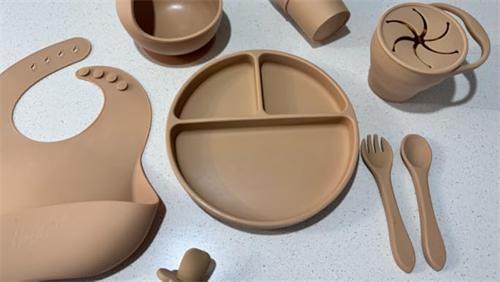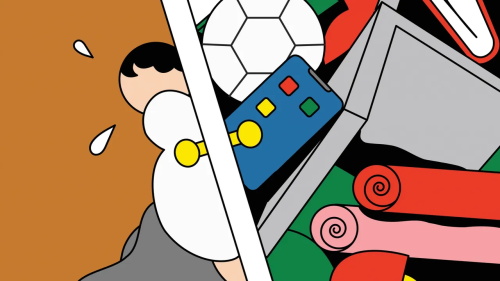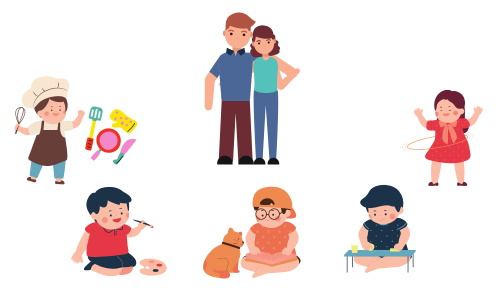Why More Families Are Embracing Minimalism to Save Money

In today's era of economic downturn and skyrocketing prices, more and more families are turning to a seemingly simple yet deeply wise lifestyle—minimalism. It’s more than just an aesthetic; it’s a way to counter life’s pressures, pursue financial freedom, and find inner peace.
Why Are So Many Families Choosing Minimalism?
You may have noticed it too: people around you are decluttering, creating tidier living spaces, and becoming more intentional with their purchases. The reason is simple—everyone is looking for a way to escape the stress of modern life and mounting financial anxiety. With inflation, rising housing and childcare costs, and escalating daily expenses, many families are beginning to ask themselves: Do we really need all this stuff?
Simplifying life has become a form of self-rescue. “Don’t buy what you don’t need” and “make the most of what you have”—these principles help people break free from material bondage and return to a life of clarity and freedom. On the surface, it looks like spending less, but on a deeper level, it’s about reclaiming control over your life.
Minimalism: A Financial Pressure Valve for Young People
Many used to spend impulsively as soon as their paycheck arrived, with no real plan—shopping became a way to ease emotional stress. In contrast, minimalist living acts like a brake on unnecessary spending.
According to research, the average household owns over 20,000 items, yet 71% of them haven’t been used in the past six months. Those who embrace a “low-ownership lifestyle” save an average of 28% more of their income annually, and their anxiety levels drop by 43%. Minimalists spend only about 63% of what typical consumers do each year.
Clearly, minimalism isn’t just about saving money—it’s a strategy for financial wellness and emotional relief.
Children Don’t Need Much to Be Happy
Parents are increasingly realizing that children don’t need a house full of toys—they need love and time. A child’s joy comes from simple things: playing in the sand, soaking up sunshine, watching fish and ducks in a pond—not necessarily from owning the latest trendy toy.
Too many toys can lead to short attention spans, emotional unrest, and a constant craving for new things. Limiting the number of items kids have helps them focus and fosters a healthier attitude toward consumption from an early age.
True “enrichment” doesn’t mean flooding a child with material goods—it means giving them the emotional space and freedom to create, explore, and grow.
Be Cautious with One-Time High-Cost Purchases
New parents often fall into the trap of thinking they must buy the best of everything: expensive strollers, car seats, nursery furniture. These items are costly and often used for only a short period.
But what suits your family best isn’t necessarily what costs the most. Accepting high-quality secondhand items or opting for rental services can save a significant amount of money and reduce environmental impact.
Core Principles of Minimalist Living: One In, One Out & Function First
Before buying anything new, ask yourself: Do I already have something similar that can serve the same purpose? Follow the “one in, one out” rule—if you buy a new shirt, donate or sell an old one. Regularly declutter your children’s books, toys, and clothes to keep your space clean and your life organized.
When shopping, focus on the core function of an item instead of being swayed by flashy features or packaging. For example, a chair should be comfortable and durable—it doesn’t need to swivel or come with a cup holder.
Cooking at home, fixing your own appliances, saving water and electricity—these simple habits not only reduce expenses over time but also cultivate a satisfying sense of self-sufficiency.
Saving More Than Just Money: Space and Time
Minimalism doesn’t just lighten the financial load—it transforms your home into a place of peace and comfort. Real spaciousness isn’t about square footage—it’s about how you use the space you have. Fewer things mean more freedom and calm.
In our fast-paced lives, we make countless small decisions every day: What to buy, wear, or eat. These decisions drain our mental energy. Disappointment with purchases, returns, and arguments over spending can weigh heavily on our emotions.
By consuming less, we reduce the number of decisions we need to make—freeing up time and mental space. Instead of stressing over which color of dishware to buy, we can focus on quality time, like taking an evening walk with our family.
Minimalism Isn’t About Deprivation—It’s a Smart Choice
When people hear “cutting back,” they often think of hardship. But that’s a misconception. Minimalism offers a new approach to “earning more and spending less.” Earning more means avoiding wasteful spending; spending less means using your time and money more efficiently—on things that truly matter.
As designer Kenya Hara once said, “True abundance is having exactly what you need, right within reach.” When we stop filling our lives with stuff, we begin to notice that the most meaningful things exist in the spaces we leave open.
In the end, what minimalism saves is not just money—it saves your peace of mind and restores your quality of life. In that tidy room, sipping coffee as you watch your child play happily, you might suddenly realize: Simplicity is the rarest form of wealth.







